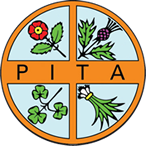4 June 2021. Every year between the beginning of April and the end of June is asparagus season. However, only half of the world's asparagus production is used as food. A research project at Munich University looked for ways to use asparagus waste for paper and packaging production.
Asparagus is a popular seasonal vegetable in Germany. In a global comparison of asparagus production, Germany landed in fourth place in 2019 with approximately 130,000 tons. However, in half of these, the stalks are too thick, too thin, broken or damaged. These become animal feed. Peels, end pieces or "crooked stalks" end up as waste products in the organic waste garbage can.
Against this background, a research project at HM was interested in alternative uses for asparagus fibers. Prof. Dr. Helga Zollner-Croll from the Faculty of Paper and Packaging was looking for new ways to use asparagus as a raw material for cardboard or paper production.
Asparagus scraps become packaging for berries
"We were able to obtain fiber material from asparagus. With the help of a laboratory fiber casting process, we produced berry skins. The rough surface is well suited for berry packaging, for example for strawberries. It may even be possible to dispense with nonwovens or absorbent liners," says Professor Helga Zollner-Croll of the results of her laboratory tests.
Trials for the sustainable use of asparagus fibers
The project, which was funded by "Bayern Innovativ," first investigated the extent to which asparagus residues are at all suitable for producing fibers for packaging materials. To this end, Zollner-Croll's team shredded asparagus peels, end pieces and whole stalks of the asparagus varieties Grolim, Gijnlim and Fortems through a pulp mill. This pulps the asparagus fibers so they can be studied in the lab. The research team first examined the fiber suspensions for their dewatering properties and water retention capacity, which are important for papermaking. An analysis of the asparagus fiber filtrates for their properties and oxygen demand provided information on how well the water cycle can be closed during paper processing.
From asparagus fibers to asparagus paper
Bachelor student Johanna Kenkenberg then processed the asparagus fibers together with pulp fibers in various blends to produce laboratory sheets for a paper test. Her result: According to her, the asparagus fibers are suitable for the production of paper, as they have similar strengths to so-called sulfite short fibers. The individual asparagus fibers are clearly recognizable in the paper, and the light beige color reflects the naturalness of the paper. However, the fiber yield is low due to the very high water content of the asparagus spears. Since the asparagus foams during milling, washing the fibers before milling is very important. This reduces the load on the water circuit and increases the tensile strength of the fibers. Which asparagus variety is used for this has a major influence on the milling result.
Zollner-Croll's goal is to make the best possible use of the asparagus fibers until their full potential is exhausted in terms of sustainability. For example, an asparagus farm could use the fibers to make baskets to market its own strawberries on the farm.
The research project was funded by "Bayern Innovativ". Students Anne Schäfer, Johanna Kenkenberg, Paulina Hahn and Anke Lind worked as research assistants in the research team. The project partner was Baumann Vertriebs GmbH & Co. KG, and the raw material supplier was Spargel + Beeren Baumann Agrar KG.
(Hochschule München, Fakultät Papier und Verpackung)
